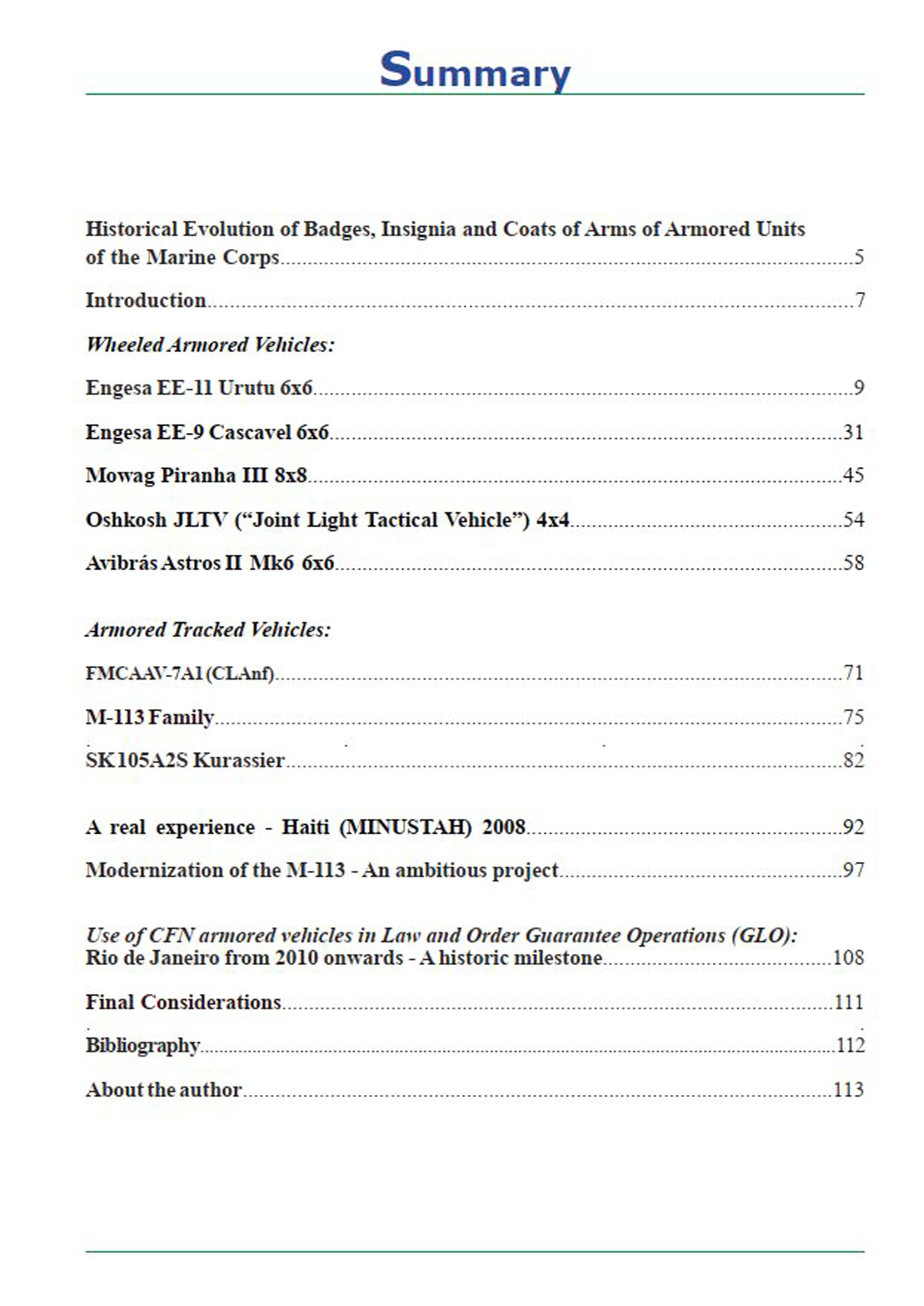Descrição
The first armored vehicles incorporated into the Marine Corps – CFN were the Engesa EE-11 M1 Urutu, in 1973, developed practically in a partnership between that private company and the Brazilian Navy, for the transportation of troops, a total of five units.
From this experience, the need for armored vehicles not on wheels, but on tracks was realized, ending up acquiring M-113 vehicles from the United States, in 1974.
In 1980, the Combat Vehicle Company – CiaCC – was created with the acquisition of six armored reconnaissance vehicles on wheels EE-9 Cascavel, armed with a 90mm cannon, manufactured in Brazil, creating the Combat Vehicle Company in the Amphibious Division Command Battalion.
In 1991, several armored vehicles of the AAV-7A1 and LVTP-7A1 models were acquired for personnel transport and emergency services, known as Amphibious Tracked Cars (CLAnf), with a new purchase in 2017, now in the Reliability, Availability, Maintainability/Rebuild to Standard (RAM/RS) standard.
On February 2, 2001, the Brazilian Navy’s Marine Corps (CFN) received eighteen SK-105 A2S Kürassier tank destroyers and one Greif rescue version, acquired from Austria.
They were also pioneers in providing their armored vehicles to the Security Forces of the city of Rio de Janeiro in 2010, where they brilliantly carried out Law and Order Guarantee operations (GLO).
On October 22, 2002, the Marine Corps Armored Battalion (BtlBldFuzNav) was created, which incorporated the first four Special Armored Vehicle on Wheels (VtrBldSR) Piranha IIIC 8×8 in 2008.
Their most recent acquisition was the purchase of 12 Oshkosh JLTV – Joint Light Tactical Vehicle – 4×4 armored vehicles, 8 of which were received in 2023, and others arrived in the country in 2024.
The Marine Corps – CFN, despite being a small force, has participated in several historic moments together with national manufacturers and continues to make history with the current purchases of new modern equipment for use in the force.








